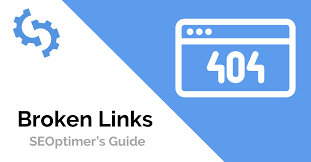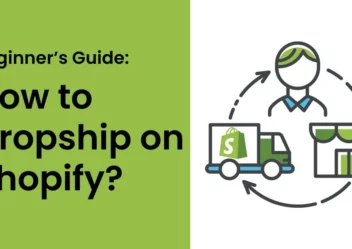Seo For Shopify: The Comprehensive Guide
As you may know, when operating an online business, SEO runs as one of the most important factors to the success of business. If your SEO is not good, it also means that your website cannot reach many potential customers.
Then, boosting sales seems impossible. So, in order to help you master with your SEO for Shopify, Arrowtheme will deliver you the comprehensive guide to instruct you to get rank #1 effectively.
Are you interested? If YES, what are you waiting for without exploring the blog below right now!
Is SEO for Shopify good?
In fact, Shopify includes a number of SEO-friendly features out of the box, but there’s still a lot more you can do to improve your search engine rankings.
As you may know, although keywords are extremely important in SEO, getting your site to rank higher requires more than merely sprinkling keywords throughout your content.
With these reasons, we will show you the comprehensive guides to meet your demands of improving SEO for your Shopify store to get rank #1. Then, you should follow through 8 important steps below.
Tutorials about Shopify SEO
1. Optimize the structure of your Shopify Store
First and foremost, the organization of your material on your page plays a critical role in SEO success. For more detail, when customers can discover what they’re searching for quickly and simply, they’re more likely to stay on your site longer and view more pages, which can benefit your search engine rankings a lot.
In particular, in order to make the navigation for your site become more and more simple and smooth, you should keep in mind not to use too many categories and subcategories.
Hence, search engines can explore and rank your products more easily then, your site will be ranked higher.
Now, you should refer to the diagram below to know more about the ideal structure in SEO.
As you can see in the diagram above, the gap between your homepage and products is just only a few clicks away. As a result, it will help your customers simply and quickly to locate what they want. And, especially, it will be useful for search engines to crawl the site.
In terms of contents, you can apply one of the most simple ways below:
- Homepage » Category Pages » Product Pages
- Homepage » Category Pages » Sub-Category Page » Product Pages
Moreover, you must always keep in mind that your website should be designed with customers first.
Aside from product and category pages, the next things you’ll need to add to your site are an About page and a Contact page. Don’t skip these pages because they tell shoppers and search engines that you’re credible and trustworthy.
Search box. Last but not least is a search box – a small yet really essential thing for boosting SEO for Shopify. Although it doesn’t assist with SEO in a direct way, it will support visitors in finding what they’re looking for, which is a crucial component of eCommerce optimization. Therefore, you are able to profit from the traffic you already have.
2. Improve SEO for Shopify by enhancing the user experience
When mentioning to boost the user experience, it comes with a number of effective ways. Now, let’s take a look at several outstanding ones below.
Drive the speed of your website
Coming to the speed of any website, it also means all about accessibility. Visitors will not be frustrated if your site is simple to use and everything moves rapidly.
In other words, the quicker your site runs, the more satisfied your visitors get. This will result in they’re more inclined to stay on your site longer.
In addition, you may speed up your Shopify store by:
- Use a mobile-friendly, fast-loading theme.
- Use photos that are smaller and more optimized.
- Remove any programs that aren’t in use.
- Use sliders sparingly.
Take advantage of a fully responsive design
In fact, a fully responsive layout will decide a lot to the speed of any website, and then improve SEO for Shopify. Thanks to responsive design, your Shopify store will surely have a fantastic look on any platform from mobile phones, tablets to PC and desktops.
Simply speaking, responsive themes may substantially enhance the user experience and retain people on your site for longer periods of time. Because Google uses time-on-page as a metric for determining a site’s worth, having a site that’s simple to navigate and read can help you rank higher.
As a result of enhanced rankings and usability, visitors return and conversions grow. For an e-commerce site, this is fantastic and a must-have.
3. Find the best Keywords to use as a target to boost SEO for Shopify
Keyword research is the basis of SEO success, and no Shopify SEO guide would be complete without it.
The simplest method to get started is to establish a list of at least five core subjects that are important to your clients and are closely related to your product without having the support of any tool.
Especially, you have to put yourself in the shoes of your customers to think about how they will find you on search engines.
Luckily, you can get ideas for these topics from a variety of sources, including:
- Create your own buyer personas if you want to be more specific.
- looking for forums and subreddits for your products
- hashtags on social media that are relevant to your products
- examining the titles, meta descriptions, and picture alt-text on competitors’ websites
4. Boost the performance of your Shopify product pages
As soon as you finish the researching keyword stage and also have a sensible site structure, you have to utilize your keywords to optimize your store’s pages.
Begin with your most important pages. Your homepage, primary product collections, and top-selling product pages will most likely be included. We’re talking about the pages that make the most money and convert the best.
In case you’re starting from scratch, you should optimize your homepage. There are a few simple methods for determining which additional sites to optimize:
- Pages for the products that generated the greatest hype in the run-up to your store’s launch.
- Pages for products connected to the most frequently searched phrases (> 10K searches per month).
Way to optimize Title Tags for categories
Let’s pick how we want to name our pages across the entire site now that we know which sites we’ll optimize first. Then, you should employ your keywords consistently, as seen in the following formula:
- Keyword 1 – Shop for Keyword 2 – Store Name
- Unicorn T-shirts – Shop for Unicorn T-shirts Online – The Store
Simple method to optimize Title and Meta Description for products
Following that, we must create titles and descriptions for our products and categories. Although you can take marketing material from supplier websites, original content will benefit your consumers and SEO.
In particular, your keywords should flow smoothly throughout the copy. If they sound unnatural or are difficult to incorporate into the flow, you should reconsider your keywords. Even the alt text for photos can be optimized for SEO, but take note that it must fit naturally.
5. Build links to your website to boost SEO for Shopify
In fact, search engines always utilize backlinks to judge how well your site is regarded by the general public.
Consider it SEO’s version of word-of-mouth. Building links is considered as an off-page SEO technique that focuses on establishing your credibility and reliability in the search engine’s eye.
Now, we will deliver you some tips to get links for your site effectively:
Links to Suppliers and Manufacturers
In case you sell products manufactured by well-known companies, it’s possible that they have a policy that only authorized sellers are given a link. So, all you need to do is send them an email to see if they’ll link to your store.
Voices from the Industry and Influencers
Another great method to build links to your site is develop both links and content, and reach out to industry leaders and influencers for interviews.
Mentions
It’s possible that you’ve already been referenced in multiple places but haven’t been linked to. You may look for these mentions on mention.com. Then send them an email requesting that they include a link to your site in their mention.
Pay attention to the broken links

Broken links can affect your site a lot if you don’t detect and cancel them in time. Once you’ve found one, contact the owner of the site that contains the broken link and request that they link to your site instead.
Because broken links are detrimental to SEO for Shopify. So this is a win-win situation for both parties: they get to fix a broken link, and you gain a backlink.
6. Take advantage of Content marketing
As you’ve heard, content is the king and it is the decisive factor to attract customers to your site. Take the effort to generate fresh material that enhances your overall user experience, and you’ll have a lot more success.
First and foremost, it can be difficult to decide what to write about, but it doesn’t have to be. Then, you should make a list of everything your customers ask you or everything you believe they might want to know.
Real responses, not product information. Moreover, your content is a great opportunity to introduce potential customers to your brand in a non-salesy approach. It’s also one of the simplest strategies to gain more backlinks and rank for more keywords.
7. Utilize the most smart Shopify SEO Apps and Tools to improve SEO for Shopify
First of all, during the working process with Shopify SEO, you should know many effective SEO plugins. Below are several outstanding examples.
- Multilingual
- As search engines evolve, this page is updated on a regular basis.
- Checks your store automatically and sends you an email if there are any issues.
Thanks to this SEO Shopify app, you can save a lot of time and money while boosting your SEO. For more detail, it checks page titles and headings, meta descriptions, speed, content, article structure, and more on a regular basis to ensure that your site is as optimized as possible.
- Check the SEO strength of all pages and articles and get suggestions for improvement.
- With a single click, you may edit numerous pages.
- Google’s algorithm is always being modified.
With the support of Yoast, optimizing your site for the keywords you provide becomes easier than ever.
In conclusion
To sum up, doing SEO for Shopify is not quite difficult, however, it requires you to be persistent to bring the best results for your ecommerce store. Arrowtheme hopes through this blog, you will get a lot of useful information to boost your website’s rank higher on search engines and develop more and more.
What’s more, Arrowtheme also comes with Shopify website packages that includes everything you need to build and develop your website effectively. Our packages will be extremely useful if you are looking for solutions that help you make changes to your ecommerce Website with minimal efforts and as little money as possible.
Thus, let’s take advantage of this awesome opportunity right now by connecting us through our CONTACT FORM.



